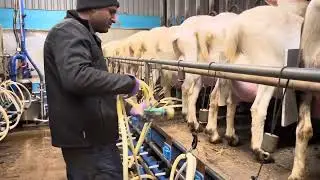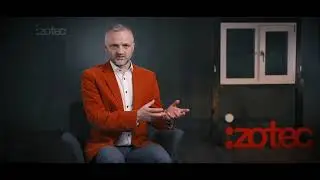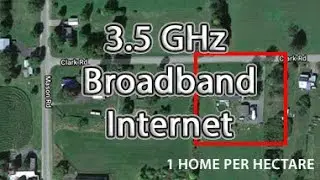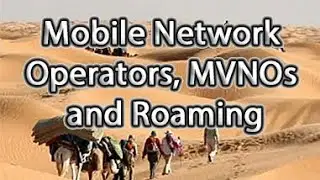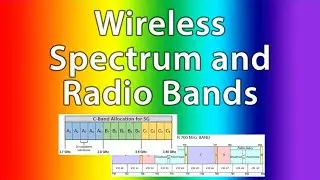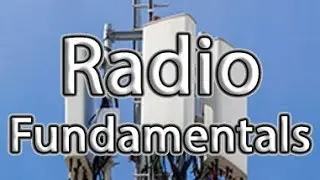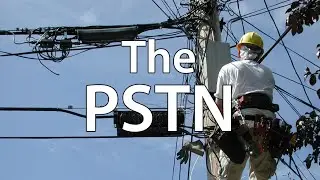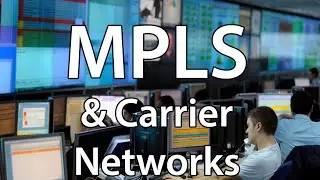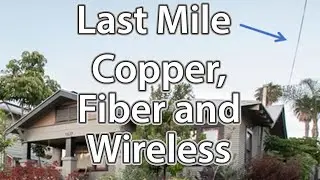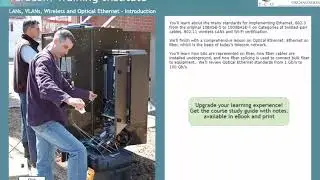Fundamentals of Voice over IP - Course Introduction
Watch in full quality: https://www.teracomtraining.com/onlin...
Course 2221 Fundamentals of Voice over IP: Jargon & Buzzwords • VoIP Phone System Components and Operation • Voice Packetization • LANs and WANs • VoIP Phones: MAC Address, DHCP, IP, UDP, RTP, QoS • SIP, Softswitches & SIP Trunking • Cloud • The Future
Fundamentals of Voice over IP is a complete introduction to everything Voice over IP. You'll learn the fundamental ideas and principles of a VoIP telephone system, VoIP, SIP & all the other jargon - what it actually means and how it all works together.
This lesson is the introduction to the course.
At each step, we'll also cover supporting and related technologies like Ethernet MAC frames and codecs and video over IP.
Course Lessons
1. The Big Picture
2. Terminals
3. Voice in Packets
4. SIP and Soft Switches / SIP Servers / Call Managers
5. Media Servers: Video Servers
6. Gateways
7. LANs and WANs
8. Key VoIP Standards
9. Where All of This is Headed: IP Dial Tone
This course can be taken by anyone who needs to get up to speed on all things VoIP. You will gain career-enhancing knowledge of the components and operation of Voice over IP systems, and learn what all of the jargon and buzzwords mean.
It also serves as a first pass through topics that are covered in greater detail in subsequent lessons.
What You Will Learn
The objective of this course is to put in place a solid, structured base of knowledge in the technology and implementation of communicating thoughts from one person's brain to another via a telephone conversation carried in IP packets.
In particular, on completion of this course, you will be able to explain:
How a VoIP phone is more of a computer than a phone, and its computer functions
How a VoIP phone digitizes the speech coming into a microphone
The idea of adding a time stamp to a 20 ms segment of digitized speech
How UDP adds a port number and error check
IP adds the called party's telephone's IP address and creates an IP packet
This is carried in a MAC frame over a physical circuit to the next router
Reconstructing the speech at the far end
What happens when packets with voice get delayed or lost
That SIP is the protocol for exchanging little text messages to start a phone call
That each end has a SIP server, either running locally, at a remote site or in the cloud
The calling party asks their SIP server to ask the called party's SIP server if the called party wants to take a call
If the called party says "yes", the two phones thereafter exchange Voice in IP Packets directly, and the SIP servers drop out of the story.
That video over IP is where the real money is
What a video server is made of, where it is located, and what it does
What a gateway is and why it is needed
What technologies used in old telephone systems have to be converted
Wiring VoIP phones to Layer 2 aggregation and PoE switches in wiring closets
Connecting Layer 2 switches to a router to connect to a carrier with Optical Ethernet
VoIP carrier services, including SIP trunking, MPLS VPN, Internet SD-WAN
What a Service Level Agreement is
The key standards related to VoIP from RTP and G.711 to Optical Ethernet
How basic telecom service will be Broadband IP Dial Tone in the future, as the Internet and the telephone network become the same thing.
How telephone service becomes a helper application called SIP everyone uses
How the web is already a helper application called DNS everyone uses
A voice call is just another kind of traffic on the IP-PSTN
Detailed Course Outline
1. The Big Picture
Course introduction and overview.
2. VoIP Phones and Terminals
Components of a VoIP phone, speech packetization, codecs, SIP, voice prioritization, LTE and 5G
3. Voice in IP Packets
Speech from lips to ear through digitization, RTP, UDP, IP, MAC and copper, fiber or wireless
4. SIP and Softswitches - SIP Servers / Call Managers
Video visit to a CO to explain "softswitch", SIP running on softswitch, PBX, Hosted PBX, cloud
5. Media Servers
Video and in the future, VR is where the money is. Video over IP, servers, Netflix appliance, DRM
6. Gateways
Protocol converters: old channelized DS0 systems ↔ Voice over IP, media and signaling conversion
7. Connecting: LAN and WAN
Layer 2 switches and PoE on Cat 6 in-building, Optical Ethernet to carrier services: VPN, SIP Trunking
8. Key VoIP Standards
A roundup of standard protocols: SIP and SDP, RTP, UDP vs. TCP, IP, 802, G.711, Cat 6, OE
9. Where All of This is Headed: IP Dial Tone
A peek at the Future, when the Internet and the telephone network are the same thing.
Download the Course Brochure PDF for the full detailed description
https://www.teracomtraining.com/pdfs/...


